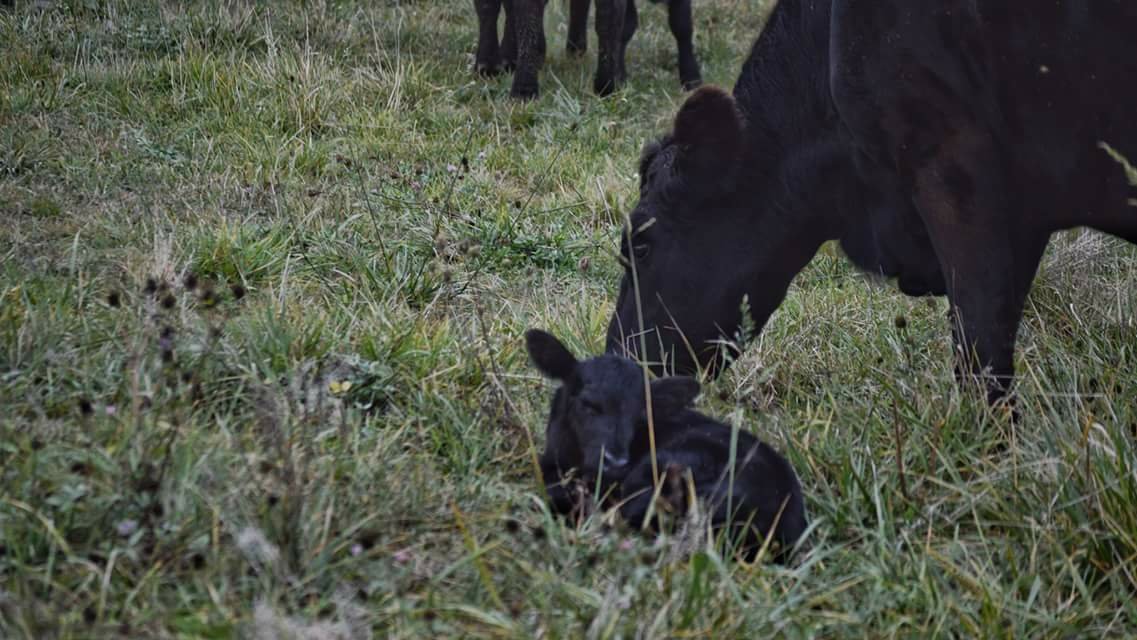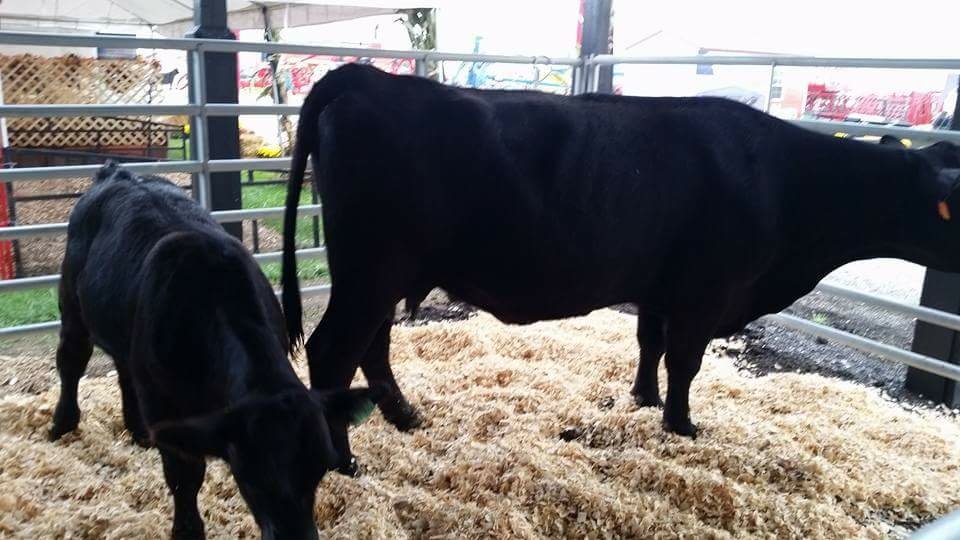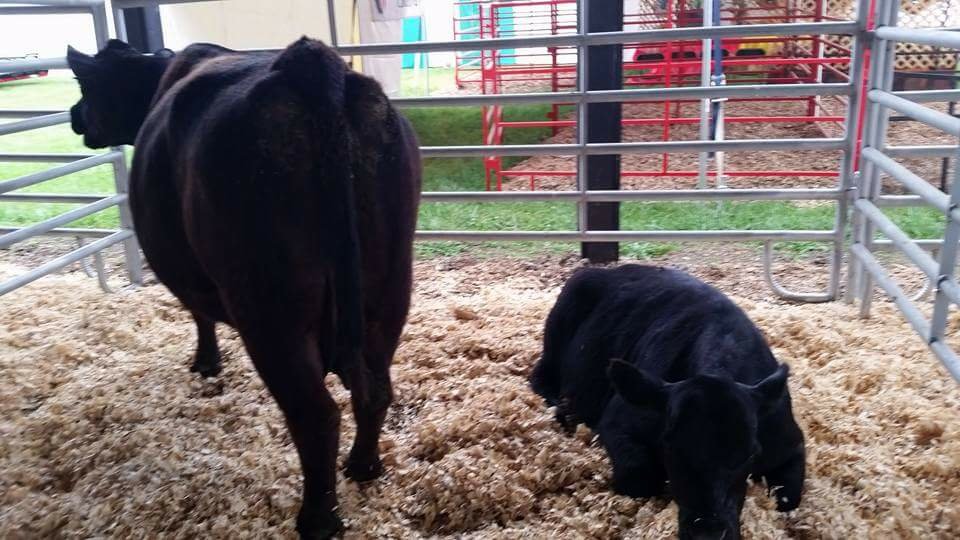 We had a surprise baby born Oct 6th. Our 17 year old cow named Hope had a little heifer.
We had a surprise baby born Oct 6th. Our 17 year old cow named Hope had a little heifer.
We went to Farm Science Review
Bulls
We used to breed two or three cows every year artificially, the kids picked out
their favorite cows which were usually in my opinion some of the best cows in the
herd. The resulting calves were mostly not worth keeping. These bulls in the tank
should have been some of the best bulls in the country, and at least on a dollar
basis, I could not begin to compete. My budget for many years would only allow a
$1500 expenditure for new bulls, not the many thousands the bull studs have to
spend so it would stand to reason that they have better bulls. But the calves from
our own bulls were usually better than the AI sired calves.
The few heifers we did keep that were AI sired mostly fell out. One that really
sticks in my mind was the heifer who went berserk and stepped on her own calf.
There are enough problems in the cow business without importing them. My opinion is
that many times the bull farms do not do their homework by investigating the
background of a prospective bull. When I am looking at a bull I want to see his
mother and also know her history, because he will produce daughters that look like
his mother. And this is only one example, there are many problems that have a
genetic component.
We quietly started line breeding a few years ago, for a number of reasons. This was
not a decision made lightly, I grew up believing you should not inbreed because
that was where dwarf cattle came from. After years of consideration, Casey
convinced me to keep a bull calf out of a heifer of his that accidentally got bred
to a half sibling. My thinking at the time was one young bull could not do much
damage.
I have gotten ahead of myself here, another lunatic thing I do is turn all the
bulls out at breeding time instead of keeping separate breeding herds. It takes a
lot less effort to run one group, and I think it improves the herd in a couple of
ways. It eliminates any bias when picking the “keepers”, we have no idea who the
calves are sired by when picking through the group, we DNA test for parentage
afterwards. And by letting the “best bull win”, nature is helping us pick the most
fertile and athletic bull.
So back to that first in bred bull we kept. He was turned out with the other bulls
that next year at breeding time. The following year when we weaned calves, we
picked out the keepers and sent in DNA samples and when the results came back I was
stunned. All but a couple were sired by that young, obviously potent, line-bred
bull. I have to mention here the old joke about the difference between in breeding
and line breeding. So now we have progressed to the point all the bulls used here
are our own line bred bulls.
I would emphasize there are risks involved in starting a program like ours, namely
there are a whole slew of recessive genes floating around, undoubtedly some of them
unknown yet, that are present in the cattle business, and inbreeding will let them
rear their ugly extra legs if that gene is present. A reference to “developmental
duplication”, something the American Angus Association notified us Angus breeders
to a couple of years ago. But now I don’t have to worry about the next new,
recessive gene waiting to be found. It is not in my herd.
A book that I would recommend is The Battle of Bull Runts, which details the story
of the dwarf gene in the Hereford breed, and their efforts to eliminate that gene.
As I read this book, I could not help but think of the similarities to a more
modern gene found in the Angus breed commonly referred to as Curly Calf Syndrome.
These genes were allowed to spread so far because of the common practice of
out breeding, or trying to capture hybrid vigor, which should not be the goal of a
purebred breeder, just my humble opinion.
Nick Wagner, breeder of fine, profitable, Angus cattle
The Show Ring
I recently read an article written by a fellow cow man in which he poked fun of
himself for giving his daughters former show heifers second chances, and as a group
these show heifers have been very successful. It is not easy to see fertility in a
heifer for most people or judges, but there are some signs. The book “Man Must
Measure” should be required reading for anyone raising cattle. It explains the
signs exhibited by highly fertile cattle, and winter hair in the summer is not one
of those signs.
Another pet peeve of mine is when the judge is giving reasons he will say that the
fat heifers are obviously more efficient than my calves. Our calves grow like weeds
on grass and momma’s milk, a feed bucket has nothing to do with efficiency. And
guess what, overly fat heifers are less likely to breed, just like heifers that
don’t shed out are less fertile.
Nick Wagner, breeder of fine, profitable, Angus cattle


